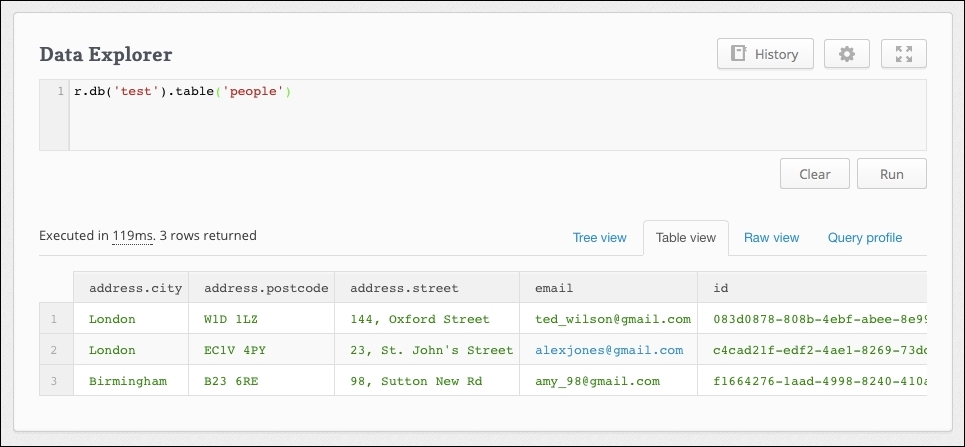This section looks at querying the database in detail. Querying returns a subset of documents in a table—from no documents at all to the entire table. Which documents get returned depends on what type of filtering we do in the query. The absence of the filter() command matches everything in a table.
One of the most common queries that you might want to run is reading all documents from a table. While this may not be a very efficient query when the table contains thousands of entries as it requires scanning the entire table, it can definitely be useful for debugging purposes.
We can read the entire table from the database just by selecting the database and an appropriate table as follows:
r.db('test').table('people')If you've been running the queries from the previous sections, the result will contain three documents:




